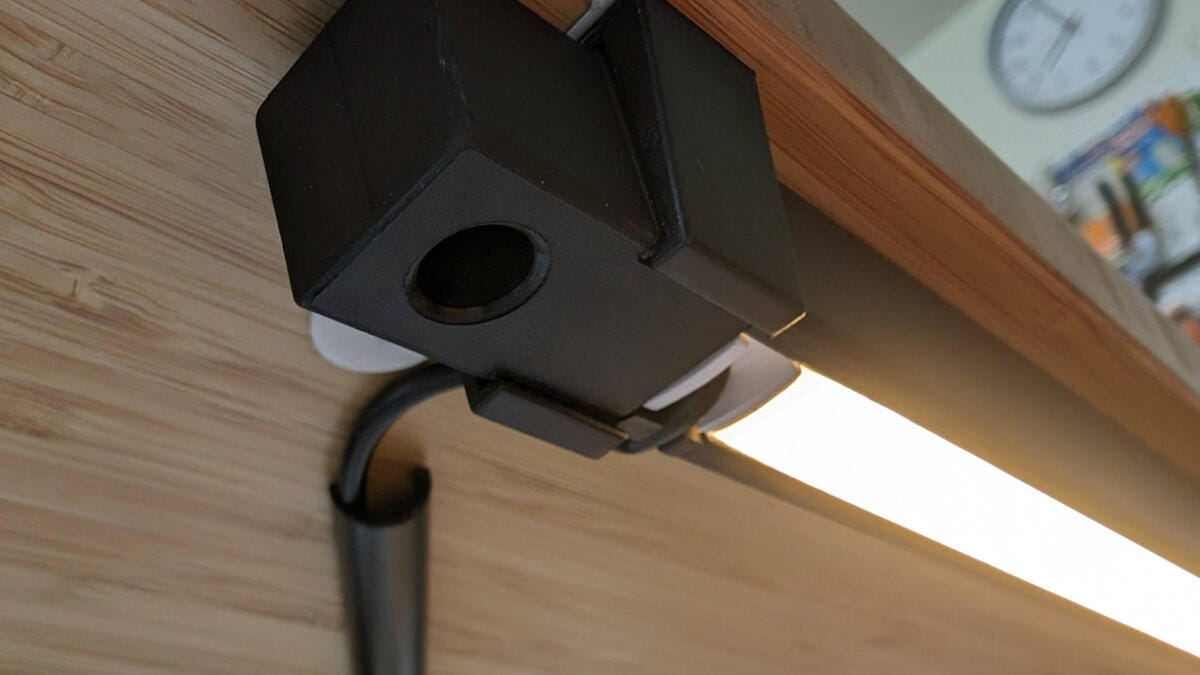Many risks stay in the dark, even in your home: sharp furniture corners, hair hair, hair manufacturers and abandoned toys. Stocked fingers and sore soles are painful but preventable with only a little lighting. Dedicated night lights exist only for this task, but they are large, often ugly and some of us need total and complete darkness to be subjected to sleep. Plus, they require either an outlet or battery – none of which can be available where you need it.
Home automation with sensors and smart lights offer a more submissive and sophisticated solution for your twilight journeys to the toilet. Smart lights come in a host of styles and sizes, and you can already install them, in this case, you are already halfway there. Here’s all you need to know about using smart lights at night.
Use a contact sensor at the door
Putting a contact sensor on doors, windows, drawers and more allows you to automate smart equipment when opened.
Contact sensors consist of two parts that join a door and its frame and are stirred when both parts split. Then you can connect your sensor to a smart light and program it to light when it is caused.
There are many types of sensors, including this AEOTEC SMARTTHings Multipurpose sensor sensorwhich offers detection features such as temperature, movement, light and vibration. However, to avoid hitting furniture at night, a simple contact sensor like this from Thirdreality will do deed.
If you are not sure how to create your own smart home, our guide to beginners will ease you.

Smart lights allow you to get the best of the great bright light and a warm bright glow.
I like to use contact sensors to light the lights during the night hours because they are less likely to be accidentally encouraged, as a movement sensor can be if a pet is walked.
To use a contact sensor for your night excursions, you will create a routine on your smart home platform. Whether this is Amazon Alexa, Google Home, Apple Homekit or another platform, your situation may not reflect the mine. My smart light lights up in my bathroom at 2% shine in a warm color when my contact sensor knows that I opened the bathroom door. The light will stay on for 10 minutes and then turn off automatically.
Motion sensors

Motion sensors are great for automation of lights to light when walking in a room and turning off when you leave.
While I prefer contact sensors for automation of lights in many situations, depending on the location, sometimes this is not the best choice, as in a hallway. As with contact sensors, motion sensors can activate automations when encouraged. But in this case, it is, as you may have thought, a movement that creates automation rather than opening a door.
I use these devices at night by connecting the two motion sensors to each end of my corridor and one in the kitchen to light the lights in those areas. As with the contact sensor automation, I am only empowering the lights up to 2% shine and a warm color when the sensor detects movement. But instead of putting the lights only to turn off after a certain amount of time has passed, I use the movement as an indicator when the lights have to turn off.
The lights will only turn off as the sensors have not discovered movement for five minutes. I use the same process for normal daytime lighting when connecting to motion sensors.
Save heel!

IKEA smart lighting offers include different strips of light like silverglans.
These sensors and smart lights have stopped me from hurting my feet and awakening my family more times than it can count. I like to use accessories I already have in my home to solve problems like this. While I could get a ribbon OR tape To install, this would be another device to manage when I already have some useful solutions at hand.
Plus, smart lights can be useful in various other ways throughout the home, from helping to save money on energy costs to help you wake up naturally. Adding these useful equipment to your home brings flexibility and personalization to the lighting that regular bulbs cannot – including help prevent damage at night.